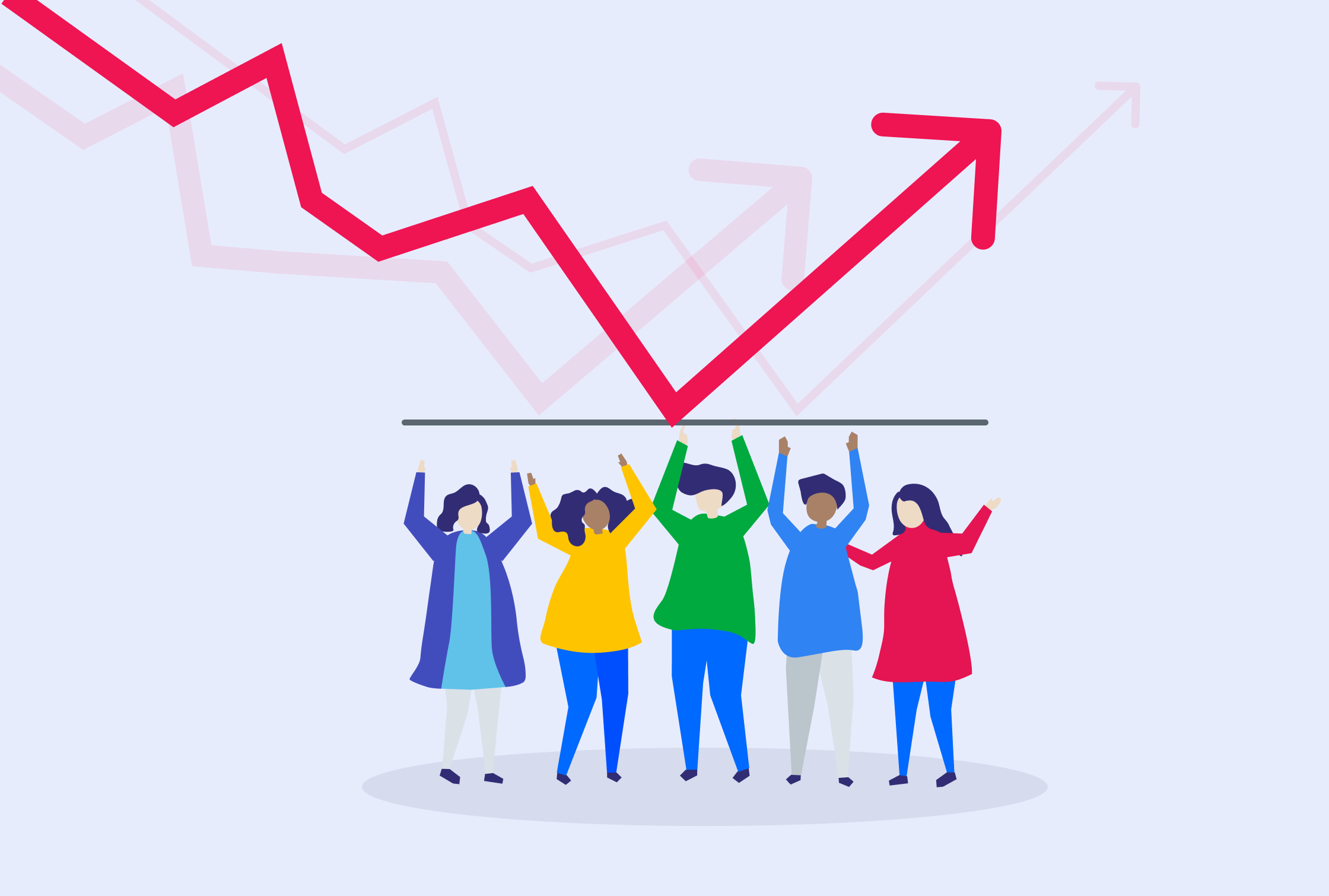We’ve all been following the impact of the economic downturn we’re experiencing on SaaS companies, our own businesses, and others we use and love.
So far, we’ve seen calls for more efficiency, down rounds, devaluation(s), freezes on hiring across the board, and unfortunately, even layoffs.
So with all that happening around us, why do we still see companies and their Customer Success teams still invest in Community projects?
Here are the five most common reasons we’re seeing and hearing from prospects and customers in B2B SaaS.
1. Resources become scarce, increasing the need to scale the ones you have
Maybe you already felt your CFO wasn’t taking you seriously when you submitted a request to hire another CSM, or someone to help out with Support. Well, in times like these, those emails get deprioritized (even ignored) because teams are tasked with working with what they already have or CFOs can’t see how the request generates future revenues.
Or more realistically, you’re likely to get a reply asking you to focus on efficiency instead of new hires: “You’re not getting more headcount, please figure out how to do more work with the same amount of people.”
Yeah. Easier said than done!
Luckily, you’re not out of options. One of the positive things to come out of the past two years of working remotely, and uncertainty during COVID, is an increased focus on Digital Strategies, Digital Customer Success, tech-touch, one-to-many, scaled Customer Success, etc.
Regardless of what you call it, the premise is the same: extending the reach of your Customer Success team by leveraging (new) digital capabilities, such as building an online Customer Community! And by building those digital capabilities you will eventually offset the cost required to service each account, by being able to handle more customers with a similar or more efficient investment.
And your CFO will finally smile at you when you walk by (or see you on Zoom). Really.
READ:Why Community needs a seat at the table (and how to get one)
2. The need for Digital Strategies will only grow as your company grows
A CSM is only able to handle a set amount of accounts, requests, calls, whatever per day. As much as they are extremely valuable, human resources are finite. Thus, we need to spend them on the biggest value-adding activities possible. This is where a digital strategy comes in.
What if you could reduce the amount of FAQ-like questions your CSMs are handling on a daily basis by building a Customer Community to make sure other customers can answer them for you? And, those questions and answers are then instantly available for the use of any new customer you sign in the future. You wouldn’t believe the amount of time spent on these, until you no longer have to—effectively freeing up time for your CSMs to spend on high-value conversations with customers that actually need their help.
Other examples of a Customer Community helping you scale your CSM team’s reach and making them more efficient are:
- Adoption: A Customer Community acts as the one centralized location for all Customer Success and Educational content. You can empower your customers with access to education, product documentation, education, ideation and help them easily get their questions answered. A good example of this is onboarding courses.
- Engagement: Reach even those customers that are not showing up to your QBRs or have requested to not have monthly meetings by allowing them to self-serve the information they need through sharing it on your Customer Community. Additionally, if you have segmented your base and / or are using a pooled CSM model, this is a best practice for any customer.
- Advocacy: Identify or create ambassadors for your brand & software, that you can leverage for e.g. G2 Reviews, Case Studies, beta groups, advisory boards, and more. Even better, you can host all of those on the Community!
- Peer-to-peer learning: Allow your customers to connect with one another and answer each other’s questions. Oftentimes, your customers want to learn from other users and this network of resources results in a stickier product.
READ: Leverage digital strategy to drive efficiency in uncertain economic times
3. Relationships have now become even more valuable
During an economic downturn, companies will usually cut on new projects and software that isn’t delivering outcomes first. So, that means two things for you as CS leader:
- You need to keep and preferably, grow every customer you now have (more on the latter at #4).
- You need to stay very close to a customer and their business goals / desired outcomes to make sure they are reaching them (without necessarily being able to assign a person to them) – and make it clear to them that they wouldn’t have been able to do so without your software.
At the core of both challenges lies only one important thing: the relationship you have with every customer. Relationships are based on certain characteristics to be either “good’ or “bad.” Characteristics like trust, honesty, and respect are pinnacles of any good relationship. But also other things like a Sense of Belonging (this partner/company is right for me), back and forth communication, feedback, confidence, and e.g. being a role model for someone.
What’s great about building a community around your brand, product(s), and user(s) is that it touches ALL of these. A community will help you give customers a Sense of Belonging by introducing them to a massive group of other customers that are using the same software to solve the same challenges in a similar business. It will also build positive sentiment towards your company and product as that correlates to revenue retention and growth.
Now, there will always be exceptions where you can’t influence what’s going on within a customer’s company enough, and they come to be at risk anyway. Even if their use of your software is perfect and they are hitting goals. Crazy things happen during an economic downturn.
Arguably, in these cases, it’s even more important to be there for customers and try to guide them through. One of the best ways of doing so is connecting them to a whole community of other customers that are going through the same thing, who are dealing with the same challenges. Your customers won’t forget your efforts, and remember if you won’t guide them through a hard time—someone else will.
Lastly, it’s important to not just put all your eggs in one basket. Say you lose your biggest advocate due to company layoffs. What then? Our advice is to get multiple stakeholders involved in the community to reinforce the value beyond your one champion. So if this does happen, you’re not left having to start from square one when it comes to building that relationship.
(Already thinking about launching? Here’s how to launch a successful community.)
4. A community helps you hit NRR and expansion goals
When topline growth is more challenging, growing existing accounts becomes of existential importance. A Customer Community is an extremely effective tool when it comes to your business hitting its expansion goals.
The creation of good, achievable expansion plans for accounts has always been a debate in Customer Success. How do you actually tell that an account is ready for an upgrade of licenses, additional features, or a different plan entirely? And that’s not even discussing how to bring it up to your contact at said account that they should be paying more?
So why not help your customers create them, themselves?
Ha, that look on your face. Let’s explain. Building a community and centralizing all customer engagement in one centrally accessible location, helps you gain many insights into Customer Behavior (in and outside of your product) and their interests.
Which in turn helps you boost your expansion plans by:
- Customers sharing best practices with each other. A customer might not believe you when you think they should buy feature “X” to see even more results, but they will surely believe it when one of their peers shows them!
- Inviting customers to Advisory Boards and Beta Groups. When they’re a part of new feature development from the start, it’s WAY easier to get them to adopt after launch.
- Easy access to education. Through Community generated content, and integrations with e.g. courses on your LMS, it’s very easy for a customer to find practical information on what features and products could mean for them.
(And yes, we’ve written about Community Expansion Plans before.)
5. Reap the rewards of building a more durable business moving forward
What now seems like an investment driven by difficult times, should actually be seen as an opportunity to restructure some processes, channels, and ways of working that you have gotten used to over the past years.
What most don’t realize is that a lot of what we consider “normal practice” in our businesses has been born from a need to quickly come up with something that works as our companies grew. And those quick developments have then become the base for other quick developments.
And it goes on and on and on and on (obvious Journey reference).
Let’s face it, especially in SaaS, we hardly ever have the time to stand still and look holistically at what we’ve built and if it could be more efficient. We’re growing too fast, right!?
Building a community is a chance to be more intentional with your channels and processes as you scale up so you can reap the rewards of efficiency. Grow, but not at all costs.
Final Thoughts
In a time where our investors, VCs, or other financial institutions are calling for a reduced focus on costs, and a better look at efficiency or profit, Community is your opportunity to be more efficient. (They will back you up.)
A community is a CS leader’s biggest partner when it comes to efficiently scaling a CS team. It helps you more effectively:
- Spread CSM resources
- Community with and for customers
- Work with customers to get the right feedback on your products and services
- Create the right customer content to elevate their experience, help them adopt more products/features or get them to engage with educational materials
- Help customers help themselves (and others) by setting up an online self-service environment
And those benefits are permanent. They’re not something you’d only want during an economic downturn. Nope, you especially want them during phases of extreme growth, as you’ll be less reliant on resources in general because your customers and community have your back.
Want to hear what these CS experts have to say about how to become more efficient using Digital Strategies?


